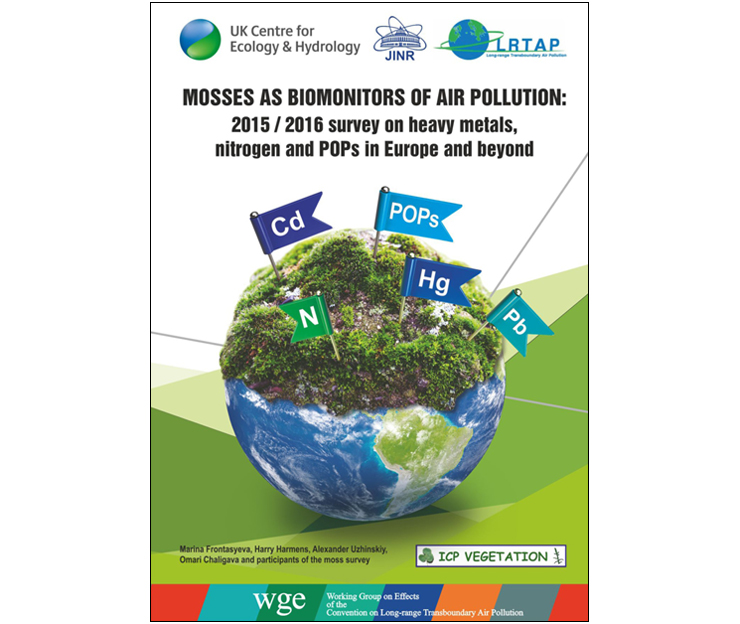News of the JINR Publishing Department
Publications, 24 July 2020
We are glad to propose you to get acquainted with a new book “Mosses as biomonitors of air pollution: 2015/2016 survey on heavy metals, nitrogen and POPs in Europe and beyond” published by the JINR Publishing Department (Dubna: JINR, 2020. – 136 p.: ISBN 978-5-9530-0508-1).
The published book is the Report of the ICP Vegetation (The International Cooperative Programme on Effects of Air Pollution on Natural Vegetation and Crops.) The ICP Vegetation reports to the Working Group on Effects of the Convention on Long-range Transboundary Air Pollution.
The authors of the Report are Frontasyeva M., Harmens H., Uzhinskiy A., Chaligava O. and participants of the moss survey.
Naturally-occurring mosses have been sampled across Europe and beyond to monitor the deposition of heavy metals, nitrogen and persistent organic pollutants (POPs) from the air. Since 1990, the moss survey has been repeated at five-yearly intervals for heavy metals. Since 2005 and 2010, nitrogen and POPs respectively were included too in some countries. In 2015/2016, mosses were collected at approximately 5,100 sites in 36 countries for heavy metals, 1,500 sites in 12 countries for nitrogen and at selected sites in eight countries for POPs. In 2015/16, participation in the moss survey has greatly increased in countries in Eastern Europe, Caucasus and Central Asia (EECCA region). The highest concentrations of heavy metals were often observed in South-Eastern Europe and the EECCA region whereas the highest concentrations of nitrogen were found in parts of central Europe. In countries that have participated in at least four out of the six surveys, the concentration of lead and cadmium in mosses has declined the most (82 % and 64 % respectively since 1990) and the concentration of mercury has hardly changed (2 % decline since 1995). The nitrogen concentration in mosses has hardly changed too since 2005 (2 % decline).
